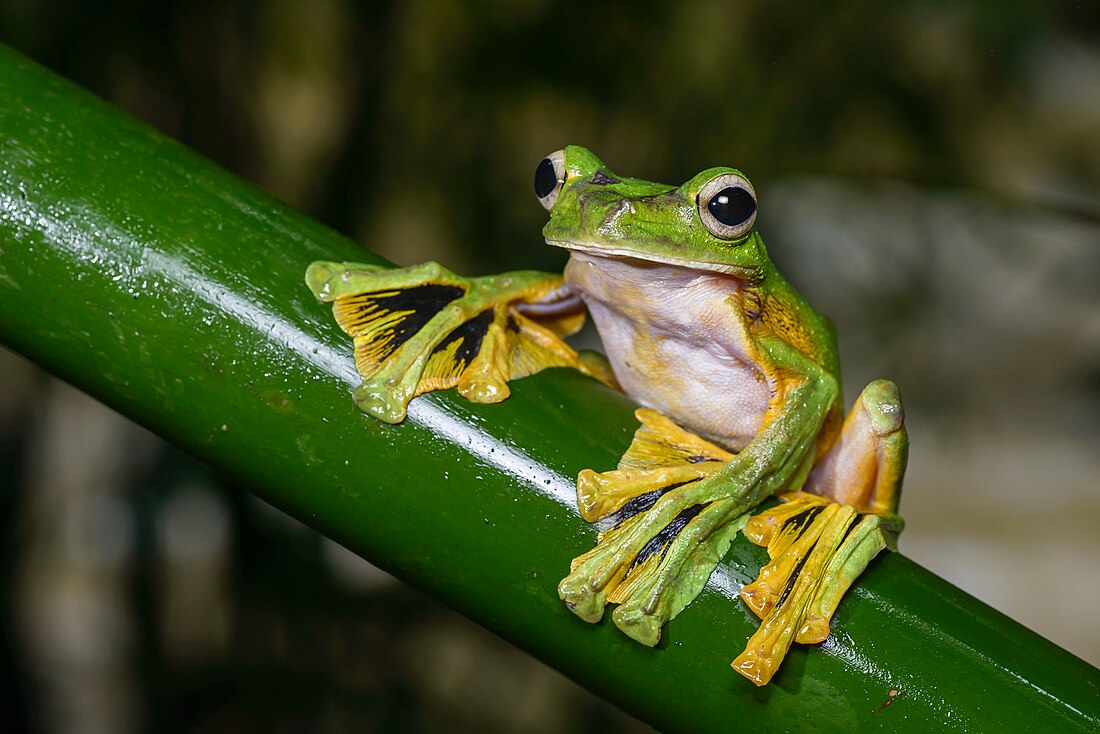Top Qs
Timeline
Chat
Perspective
Flying frog
Frog that can achieve gliding flight From Wikipedia, the free encyclopedia
Remove ads
A flying frog (also called a gliding frog) is a frog that has the ability to achieve gliding flight. This means it can descend at an angle less than 45° relative to the horizontal. Other nonflying arboreal frogs can also descend, but only at angles greater than 45°, which is referred to as parachuting.[1]

Evolution
Gliding flight has evolved independently several times among frogs from both New World (Hylidae) and Old World (Rhacophoridae) families.[1][2] This parallel evolution is seen as an adaptation to their life in trees, high above the ground. Characteristics of the Old-World species include "enlarged hands and feet, full webbing between all fingers and toes, lateral skin flaps on the arms and legs, and reduced weight per snout-vent length".[2] These morphological changes contribute to the flying frogs' aerodynamic abilities.
Remove ads
Taxonomy
Alfred Russel Wallace made one of the earliest reports of a flying frog.[3] The species he observed was later described by George Albert Boulenger as Rhacophorus nigropalmatus.
Flying or gliding frogs includes members of these genera:
- Agalychnis (Hylidae)
- Ecnomiohyla (Hylidae)
- Polypedates (Rhacophoridae)
- Zhangixalus (Rhacophoridae)
There are 380 species of flying frogs.
References
External links
Wikiwand - on
Seamless Wikipedia browsing. On steroids.
Remove ads
